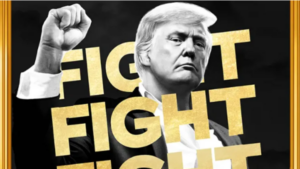
Trump’s Strategic Bitcoin Reserve: A Game Changer for U.S. Crypto Policy, or Not?
- March 7, 2025
- 11:54 am
On March 6, 2025, President Donald Trump unveiled a groundbreaking initiative by signing an executive order establishing the Strategic Bitcoin Reserve (SBR) and the United States Digital Asset Stockpile (USDAS). This unprecedented move positions the U.S. government to officially recognize and strategically utilize cryptocurrencies, notably Bitcoin, as part of the nation’s broader financial strategy.

Why Establish a Strategic Bitcoin Reserve?
The announcement comes amidst growing global recognition of cryptocurrencies’ economic and geopolitical significance. By establishing the SBR, the U.S. aims to enhance financial resilience and secure a competitive edge in the rapidly evolving digital economy. This strategic move mirrors traditional reserves—like the U.S. Strategic Petroleum Reserve or gold reserves—which serve as economic stabilizers and geopolitical tools.
Comparatively, gold has historically been the go-to reserve asset due to its stability and universal acceptance. Bitcoin, however, offers distinct advantages such as portability, rapid transferability, transparency, and decentralization, aligning with modern economic and technological dynamics. However, unlike gold, Bitcoin’s volatility introduces both opportunity and risk into the equation.
How Would the Reserve Operate?
Market Reactions and Industry Implications
Following the announcement, the cryptocurrency market exhibited immediate bullish sentiment, with Bitcoin and other digital assets rallying in response. Investors see this move as validation, potentially accelerating institutional adoption.
However, reactions are nuanced:
- Positive: Advocates argue that the reserve solidifies crypto’s legitimacy, encouraging broader institutional investment. The move could accelerate mainstream adoption and regulatory clarity, providing a positive signal to businesses and investors.
- Negative Concerns: Critics argue the initiative introduces considerable risk due to the inherent volatility of digital assets. There is also unease regarding governmental influence potentially conflicting with crypto’s decentralized ethos.
Strategic Comparison to Gold Reserves
The strategic decision mirrors the U.S. historical establishment of strategic reserves—such as gold and oil—to maintain economic security and hedge against global uncertainty. By including Bitcoin, the U.S. acknowledges the emerging reality that digital assets now rival traditional commodities. This comparison highlights how cryptocurrencies have graduated from niche assets to critical financial tools, integral to national economic strategies.
Gold reserves historically function as economic buffers during crises, providing governments the means to stabilize currencies and maintain economic integrity. Bitcoin’s inclusion as a reserve asset implies a parallel vision for digital assets, preparing the nation for a digitally-driven financial landscape and potentially mitigating risks associated with rapid technological and economic changes.
Nuanced Perspectives and Future Outlook
While this development marks a significant step in crypto’s mainstream adoption, it’s crucial to consider its broader context. The strategic reserve aligns with global trends, with countries like El Salvador and Bhutan already holding Bitcoin reserves. Trump’s announcement pushes the U.S. into this global competition, asserting economic influence and potentially reshaping international financial dynamics.
The execution and outcomes of the Strategic Bitcoin Reserve and Digital Asset Stockpile will set influential precedents. The policy could inspire other nations to adopt similar strategies, significantly influencing global economic governance and cryptocurrency adoption.
Ultimately, this strategic shift underscores the increasingly central role digital assets play in international finance, setting the stage for an era where crypto and national financial strategies become intrinsically intertwined.
Conclusion
Trump’s Strategic Bitcoin Reserve initiative is a pivotal moment, marking official U.S. acknowledgment of cryptocurrencies’ growing strategic value. While the long-term implications remain uncertain, this policy sets the foundation for transformative change in the global financial order, positioning cryptocurrencies firmly at the heart of future economic resilience strategies.
We will keep you updated on the reserve as new developments reveal themselves.
Share Article
Recommended


Trump’s Memecoin Shakes Up the Market: The Rise of $TRUMP

MiCA Regulations Reshape the Crypto Landscape: What You Need to Know

Russia’s New Crypto Mining Laws: A Game Changer for the Industry

Non-Fungible Tokens (NFTs)

What is a Decentralized Exchange (DEX)?

Fundamental analysis explained

Difference Between Fundamental & Technical Analysis

Caroline Ellison Sentenced to Two Years in Prison: The FTX Scandal Continues
Caroline Ellison, the former CEO of Alameda Research and a central figure in the FTX cryptocurrency collapse, has been sentenced to two years in prison for

Telegram CEO Pavel Durov Arrested in France: A Historic Legal Battle Begins
In a shocking and unprecedented move, French authorities arrested Pavel Durov, the CEO and founder of Telegram, on August 24, 2024. Durov, a well-known figure in

Mt. Gox Funds: Long-Awaited Returns Begin for Creditors
After nearly a decade of legal battles and financial uncertainty, creditors of the infamous Mt. Gox cryptocurrency exchange are finally seeing light at the end of the tunnel.

MemeCoins on the Rise: Memecoin insights June 2024
After the Bitcoin market cap has breached 1 trillion dollars and it has convinced researchers at the Deutsche bank that the cryptocurrency is here to stay for a long time.

 Bitcoin
Bitcoin  Ethereum
Ethereum  Tether
Tether  XRP
XRP  USDC
USDC  Solana
Solana  TRON
TRON  Lido Staked Ether
Lido Staked Ether  Dogecoin
Dogecoin  Cardano
Cardano  Figure Heloc
Figure Heloc  WhiteBIT Coin
WhiteBIT Coin  Wrapped stETH
Wrapped stETH  Bitcoin Cash
Bitcoin Cash  Wrapped Bitcoin
Wrapped Bitcoin  Chainlink
Chainlink  USDS
USDS  Binance Bridged USDT (BNB Smart Chain)
Binance Bridged USDT (BNB Smart Chain)  LEO Token
LEO Token  WETH
WETH  Hyperliquid
Hyperliquid  Stellar
Stellar  Wrapped eETH
Wrapped eETH  Monero
Monero  Ethena USDe
Ethena USDe  Coinbase Wrapped BTC
Coinbase Wrapped BTC  Litecoin
Litecoin  Sui
Sui  Avalanche
Avalanche  Hedera
Hedera  Zcash
Zcash  Shiba Inu
Shiba Inu  Dai
Dai  sUSDS
sUSDS  World Liberty Financial
World Liberty Financial  USDT0
USDT0  Cronos
Cronos  Toncoin
Toncoin  PayPal USD
PayPal USD  Ethena Staked USDe
Ethena Staked USDe  Polkadot
Polkadot  Uniswap
Uniswap  Mantle
Mantle  Aave
Aave  USD1
USD1  Bittensor
Bittensor  Bitget Token
Bitget Token  MemeCore
MemeCore